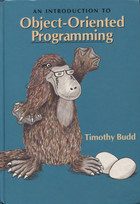Object Oriented Programming, Analysis & Design
Object-oriented programming (OOP) is a programming paradigm that uses "objects" and their interactions to design applications and computer programs. Programming techniques may include features such as information hiding, data abstraction, encapsulation, modularity, polymorphism, and inheritance. It was not commonly used in mainstream software application development until the early 1990s. Many modern programming languages now support OOP
Object-oriented analysis and design (OOAD) is a software engineering approach that models a system as a group of interacting objects. Each object represents some entity of interest in the system being modeled, and is characterised by its class, its state (data elements), and its behavior. Various models can be created to show the static structure, dynamic behavior, and run-time deployment of these collaborating objects. There are a number of different notations for representing these models, such as the Unified Modeling Language (UML).
Object-oriented analysis (OOA) applies object-modeling techniques to analyze the functional requirements for a system. Object-oriented design (OOD) elaborates the analysis models to produce implementation specifications. OOA focuses on what the system does, OOD on how the system does it.










